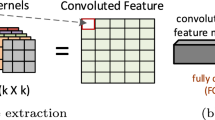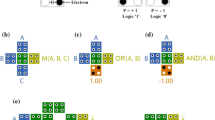Abstract
Real time high quantity digital data computing design needs to achieve high performance with required accuracy range. The constraints involved with high performance are low power consumption, area efficiency and high speed. This paper proposes a design of high speed energy efficient Static Segment Adder (SSA), which improves the overall performance based on static segmentation. Accuracy Adjustment Logic (AAL) is incorporated to improve the accuracy derived from negating lower order bytes of input operands. In this paper, an integration of static segment method and accuracy adjustment logic is used to achieve computational accuracy for error tolerant applications. The proposed adder design enables to provide high speed and energy efficiency through the static segmentation method. Image enhancement operation is carried out using proposed SSA design. In this method, 99.4% overall computational accuracy for 16-bit addition even with 8-bit adder can be achieved.








Similar content being viewed by others
References
Breuer MA (2004) Intelligible Test Techniques to Support Error-Tolerance. Proc. Asian Test Symposium pp 386–393
Breuer MA, Haiyang Z (2006) Error-tolerance and Multi-Media. Proc. of the International Conference on Intelligent Information Hiding and Multimedia, Signal Processing pp. 521–524
Du K, Varman P, Mohanram K (2012) High Performance Reliable Variable Latency Carry Select Addition. Proc IEEE/ACM Design, Automation Test in Europe (DATE) pp 1257–1262
Gupta V, Mohapatra D, Park SP, Raghunathan A, Roy K (2011) IMPACT: Imprecise Adders for Low-Power Approximate Computing. Proc. IEEE/ACM International Symposium on Low-Power Electronics and Design (ISLPED) pp 409–414
Lee KJ, Hsieh TY, Breuer MA (2005) A Novel Testing Methodology Based on Error-Rate to Support Error tolerance. Proc. of International Test Conference pp 1136–1144
Liu Y, Zhang T, Parhi K (2010) Computation error analysis in digital signal processing systems with Overscaled supply voltage. IEEE Trans VLSI Syst 18(4):517–526
Lu SL (2004) Speeding up processing with approximation circuits. IEEE Computer 37(3):67–73
Mohapatra D, Chippa V, Raghunathan A, Roy K (2011) Design of Voltage-Scalable Meta-Functions for Approximate Computing. Proc Design, Automation and Test in Europe Symp pp 1–6
Rawat K, Darwish T, Bayoumi M (2002) A low power and reduced area carry select adder. Proc 45th Midwest Symp Circuit 1:467–470
Sakthivel R, Kittur HM (2014) Energy efficient low area error tolerant adder with higher accuracy. Circuits, Systems, and Signal Processing 33(8):2625–2641
Shin D, Gupta SK (2008) A Re-Design Technique for Datapath Modules in Error Tolerant Applications, Proc Asian Test Symp pp 431–437
Venkatesan R, Agarwal A, Roy K, Raghunathan A (2011) MACACO: Modeling and Analysis of Circuits for Approximate Computing. Proc IEEE/ACM International Conference on Computer-Aided Design (ICCAD) pp 667–673
Ye R, Wang T, Yuan F, Kumar R, Xu Q (2013) On Reconfiguration-Oriented Approximate Adder Design and its Application. Proc International Conf Computer-Aided Design pp 48–54
Zhu N, Goh W, Zhang W, Yeo K, Kong Z (2010) Design of Low-Power High-Speed Truncation-Error-Tolerant Adder and its application in digital signal processing. IEEE Trans on VLSI Systems 18(8):1225–1229
Ziegler M and Stan M (2001) Optimal Logarithmic Adder Structures with a Fanout of Two for Minimizing the Area-Delay Product. Proc International Symp Circuits and Systems pp 657–660
Author information
Authors and Affiliations
Corresponding author
Additional information
Responsible Editor: S. Sindia
Rights and permissions
About this article
Cite this article
Jothin, R..., Vasanthanayaki, C. High Speed Energy Efficient Static Segment Adder for Approximate Computing Applications. J Electron Test 33, 125–132 (2017). https://doi.org/10.1007/s10836-016-5634-9
Received:
Accepted:
Published:
Issue Date:
DOI: https://doi.org/10.1007/s10836-016-5634-9




